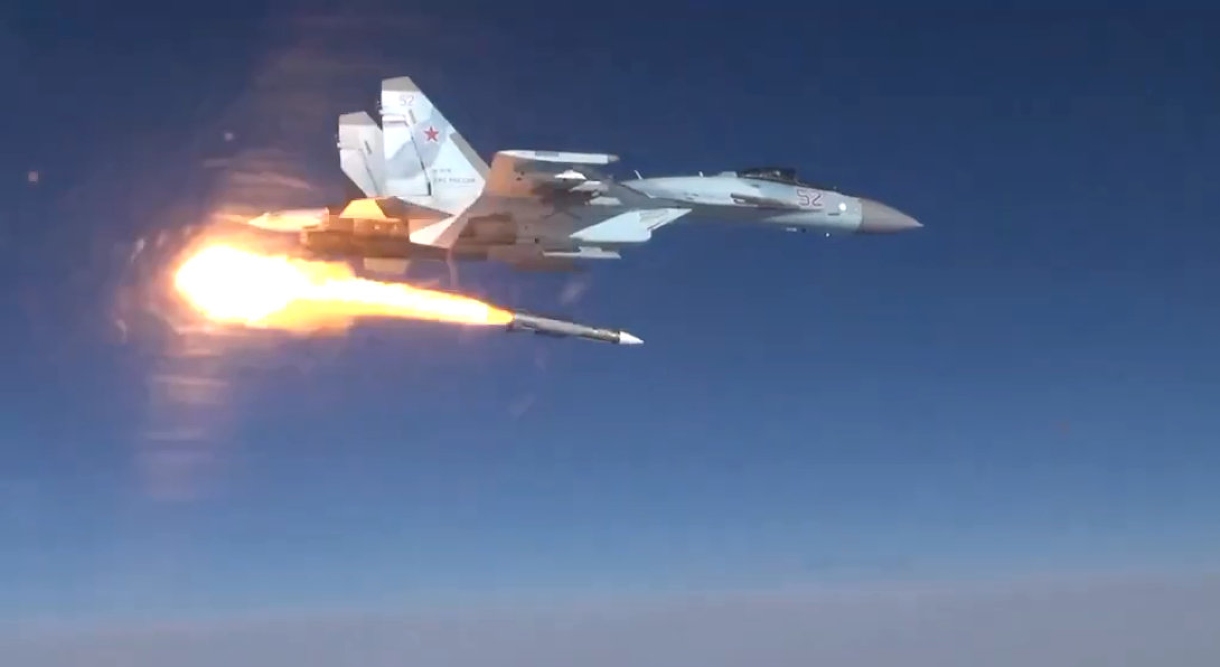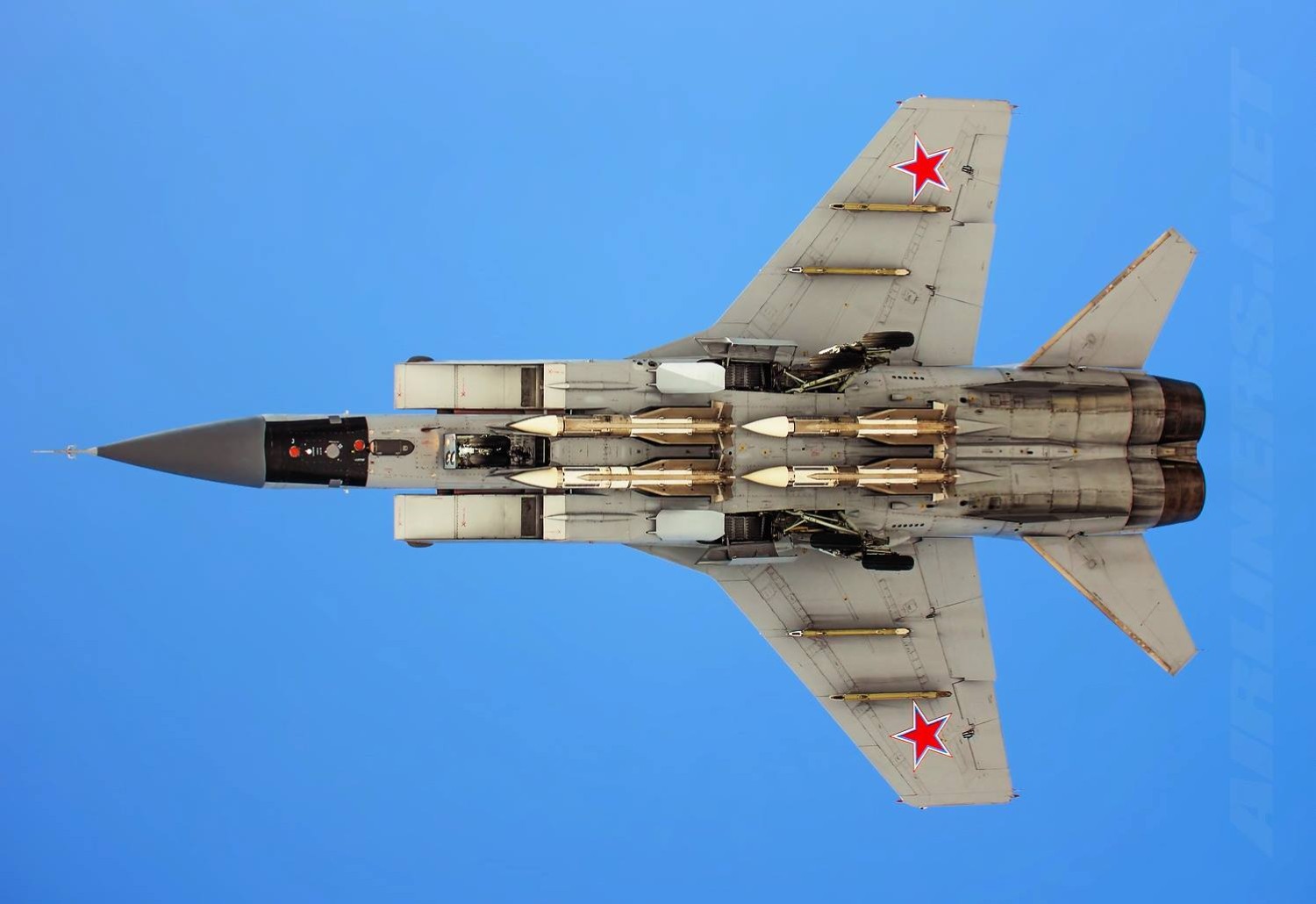In a recent media interaction, Ukrainian fighter pilots flying dangerous missions on their Soviet-legacy warplanes admitted that their biggest challenge was the formidable Russian Su-35 fighter jet.
A recent report published in BBC details how the Ukrainian fighter jets are forced to maneuver and fly at very low altitudes to escape an air-to-air missile fired by the Su-35 fighter jet of the Russian Aerospace Forces (VKS).
When fired on, the fighter pilots know they must abort their mission and do whatever they can to survive.
A MiG-29 fighter pilot who goes by the call sign ‘Silk’ told BBC that they must dive low to the point where they can see the treetops. “Such flights close to the surface are the most difficult,” says Silk. “You have to concentrate very hard. And because of the low height, you don’t have the time or the space for a safe ejection.”
Ukraine sends two fighter jets for an attack mission, where one aircraft is responsible for attacking a ground asset while the other, like the one flown by Silk, provides cover from air-to-air missiles. Recently, it has become increasingly difficult for Ukrainian pilots to carry out attack missions since the Su-35s are always on air patrols.
Another famous MiG-29 pilot, with his fair share of media interactions, told BBC, “Our biggest enemy is Russian Su-35 fighter jets.” “We know positions of [Russian] air defense, and we know their ranges. It’s quite predictable, so we can calculate how long we can stay [inside their zone]. But in the case of fighter jets, they are mobile. They have a good air picture and know when we’re flying to the front lines.”
Russian air patrols can identify a jet’s takeoff even far within Ukrainian territory. Their R-37M missiles have a range of 150–200 kilometers (93–124 miles), but Ukrainian rockets can only go up to 50 kilometers (31 miles) before hitting an airborne target. This means that Russian aircraft can spot Ukrainian aircraft and shoot them down before they pose any threat.
Russia has reportedly been replacing its older fighter jets with the latest and more advanced Su-35 to establish a “localized air superiority” on the frontlines. Besides giving a very tough time to the Ukrainian fighters, the Su-35 has also been engaging with and allegedly carrying out dangerous intercepts of the NATO military aircraft.
In November 2022, the UK-based think tank Royal United Services Institute (RUSI) published a report. It stated, “Russian fighters have remained highly effective and lethal against Ukrainian aircraft near the frontlines throughout the war, especially the Su-35S with the R-77-1 long-range missile and, in recent months, the MiG-31BM with the R-37 very long-range missile.”
However, it is worth examining why the Ukrainian fighter pilots are more terrified of the Su-35s than the MiG-31K aircraft that fire the lethal Kinzhal hypersonic missiles and have been credited with shooting down Ukrainian fighter jets from a very high altitude.
Some Ukrainian air defense operators who had completed training on the new PAC-3 Patriot missile defense systems also stated that the Su-35 was their “dream target.” Such is the terror posed by the Russian workhorses that have been extensively deployed on the frontlines by the VKS.

Why Is Su-35 Bigger Challenge Than MiG-31?
Ukrainian officials have stated that the success of any future counteroffensive operations may be significantly impacted by Ukraine’s limited ability to deploy its military aviation close to the front lines.
Another popular MiG-29 fighter pilot, who goes by the call sign ‘Juice,’ claimed that the Ukrainian Air Force was already flying up to 20 times fewer sorties than the Russian Air Force.
Additionally, the Ukrainian attack planes are armed with outdated Soviet-era bombs and unguided rockets, swiftly running out due to a lack of supply.
Although Ukraine has shot down an unspecified number of Su-35s, the number is insignificant. As EurAsian Times has discussed extensively, advanced Russian fighters, like the Su-30SM and Su-35S, have remained very effective and lethal against Ukrainian aircraft throughout the war.
This is besides the advanced MiG-31 warplanes that have received global attention and praise for their combat performance. The RUSI report from November stated that the MiG-31 Foxhound – a twin-seater, supersonic, interceptor fighter aircraft has shot down several Ukrainian fighter jets using its effective long-range Vympel R-37M air-to-air missiles.
Not just that, the MiG-31K variant can also fire hypersonic Kinzhal missiles on targets inside Ukraine.

In contrast, the Su-35 has been deployed together with the Su-34 Fullback along the frontlines to fire guided aerial bombs on Ukraine, for which the latter has little defense. While both the Su-35 and the MiG-31 pose a massive challenge to the age-old Ukrainian Air Force, the fighter pilots in Ukraine are still more way of Su-35s.
Indian Air Force veteran and military expert Vijainder K Thakur (retd) told EurAsian Times, “MiG-31K, armed with Kinzhal missiles, are dedicated to attacking high value, strategic targets. They pose a threat to Ukrainian infrastructure & command and control targets. Some MiG-31BM variants, armed with RVV-BD (R-37), are employed for air dominance roles.
“Su-35S is deployed for tactical roles. They are usually armed for swing roles and armed with Kh-31 ARM, Glide Bomb, or other air-to-surface missiles for the attack, as well as air-to-air missiles such as the RVV-BD, RVV-SD & RVV-MD for air dominance. Su-35S fly air dominance patrols 24×7 along the entire frontline.
Ukrainian fighters airborne are more likely to encounter a Su-35S than a MiG-31BM.”
The Su-35 multirole supermaneuverable one-seat fighter is intended to engage an enemy’s air, ground, and naval surface forces, conduct aerial surveillance, and destroy ground infrastructure targets covered by air defense systems and located far from the aircraft’s home airfield.
Additionally, it has super maneuverability abilities. When asked why the Su-35 was more feared than the MiG-31 aircraft, Indian Air Force Group Captain Johnson Chacko, KC (retd) told the EurAsian Times, “MiG 31 is not as maneuverable as a Su-35 would be for close combat. A MiG 31 flies extremely high and can launch weapons at standoff ranges, which means out of the range of deployed enemy air defense systems.
“The Su35 can do it within the ranges of the air defense systems but with the use of support systems that can suppress them. One cannot compare the two. If one knows what has hit him, it is probably a Su-35; if not, it would be a MiG 31.”
Although Russia has been unable to establish air superiority over Ukraine, the Russian fighter jets keep a round-the-clock vigil and shoot down hostile aircraft in whatever limited scope of operation is available.
With the Ukraine war dragging on with neither side establishing clear air superiority, Kyiv has requested its West partners to arm it with F-16 fighter jets. However, with NATO’s constant dilly-dallying, the Ukrainian fighter pilots are pushing their limits against the Russian Air Force.
- Contact the author at sakshi.tiwari9555 (at) gmail.com
- Follow EurAsian Times on Google News




